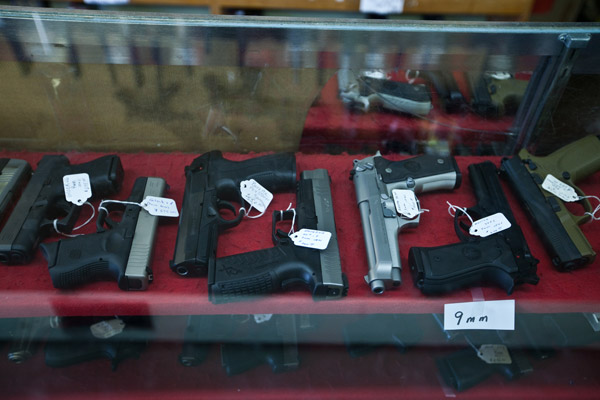
Zbigniew Bzdak / Chicago Tribune
The state has less than two months to figure out how to implement a concealed carry law. Illinois will decide on where, and under what circumstances, residents can carry weapons. Some of these circumstances have gotten attention—should you be able to carry a gun on the CTA? How about to a bar, church, school, or baseball game?
But the world of concealed carry is a complex one, so I looked at the thicket of laws that govern it across the country. Some of the usual suspects regulate concealed carry very tightly, like California and New York, where local law enforcement gets a say in whether you're allowed to at all. But not all the stringent rules are relegated to the coasts—Texas, for instance, requires not just training but demonstrated accuracy. And Southern states, which value the Second Amendment but also tend to be culturally judgemental about drinking, have strict laws that are meant to prevent chronic alcoholics from carrying guns.
WBEZ is looking at the differences between gun violence and homicide in New York City and Chicago. In 1990, Chicago and New York had near-identical homicide rates (30.3 and 30.7 per 100,000, respectively). By 2011, Chicago's had declined by about half (15.9); New York's fell to 6.3.
Policing and law enforcement gets a lot of the attention when comparing the two cities—stop and frisk laws, misdemeanor arrests, mandatory minimum sentences, and the like. But policing isn't the only tool, and if not the last line of defense, it's close. Having looked at the theory that Chicago's public housing policies may have increased crime rates in the city, it's worth considering what New York did in contrast. Specifically, New York started its ten-year plan for transformation more than a decade before Chicago—despite the fact that the city had been virtually bankrupt a couple years before—and invested its money and focus on transforming blighted areas by rehabbing "vacant, tax-foreclosed, city-owned properties. Recycling is the central element in the production program."
Megan Cottrell looked at Chicago's Plan for Transformation, delayed and sometimes troubled though it's been, and found that it has resulted in positive outcomes. Had it begun when New York's did, perhaps the outcomes would be farther along as well.
Then, in the Reader, Mick Dumke examines what's happened in Chicago now that it's legal to have guns. Previously, it was illegal, and there were a lot of guns. Now it's legal, but you have to have a permit. And the number of permits has not remotely caught up to the number of guns.


